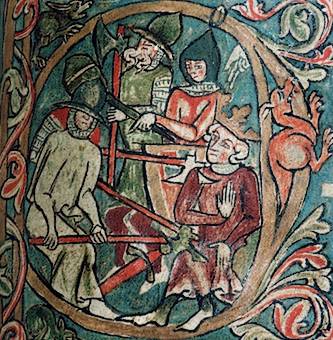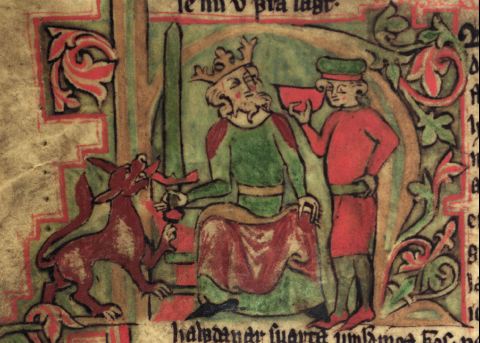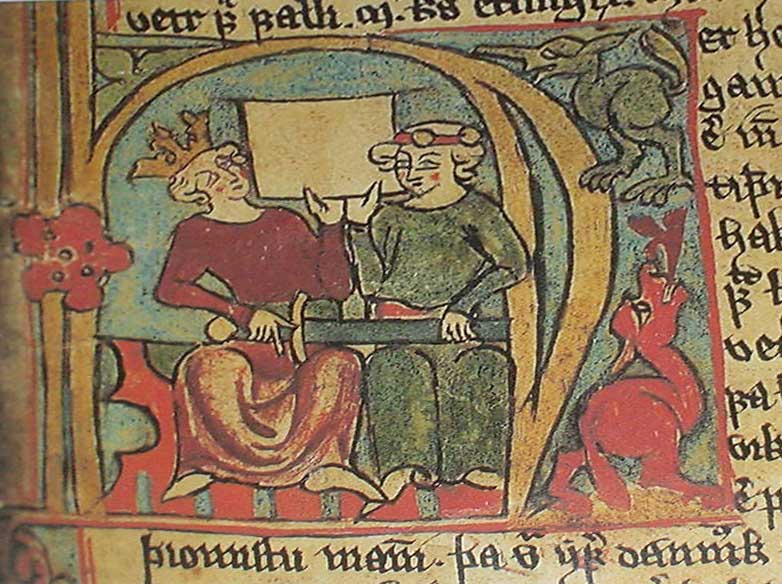Library & Bibliographic Research Exercise
Due: 23 February 2011: please submit an electronic copy via Turnitin on the companion BlackBoard site, no later than 10:00am.
Length: recommended ca. 3-6 pages.
References: please make sure all of your references are complete and accurate. You may use any referencing format (Chicago is usually preferred among historians, but MLA, Turabian, etc. are also fine), so long as your references are clear, complete & consistent. The Chicago Manual of Style is available online.
If you are unsure how to write references, please consult one of the many aids available to you (primarily Gordon Harvey, Writing with Sources, 2nd edn [2008], but also works like Diana Hacker, A Pocket Style Manual , 6th edn [2011], on the recommended readings list, or the Viking Age research guide webpage). If you still can't find an answer to your question, your instructor will, of course, be happy to help (but I do want you to look for the answer yourself first).
Rationale for this exercise
This exercise aims to familiarise you with some of the procedures, possibilities and pitfalls of source referencing. Inserting references into scholarly work including the papers you produce is not just an arcane, arbitrary requirement; it is a method for enabling dialogue between individual pieces of scholarship, as each author signals which other authors s/he relies on or takes issue with. Properly referencing the work of others safeguards against breaches to academic integrity, of course. It is also, in fact, a way of signalling one's own originality: these ideas are derived from X, those ideas contradict Y, these others are implicit in what Z is saying and here is how I synthesize them & draw my own conclusions. Proper referencing also allows future scholars those who read one's work to reconstitute the research path and propose ways to blaze new trails off it.
Procedure
To do this assignment properly (and to avoid unnecessary frustration), you will need to tackle it in several stages. Leave yourself ample time to complete each stage. The whole thing should take no longer than 3-5 hours, but you need to budget your time prudently.
- You should first read the Introduction to Eric Christiansen's The Norsemen in the Viking Age (2002: 1-9) and answer question 1. The book is available on course reserve in Uris Library. It is recommended that you consult the hardcopy of the book at some point during your work on this exercise, even if you use the online excerpt initially.
- You should then plan on spending some time working with the Library Catalogue to complete question 2.
- Questions 3 & 4 will require some legwork (literally!) through the Library stacks, as well as time to think and write.
Problems?
Please be sure to contact Oren if you run into any difficulties. You may also wish to consult with reference librarian Virginia Cole (but I do want you to try to figure things out yourself first).
Questions
- Summarize Christiansen's main argument(s) in the Introduction, in a page or less of your own prose. Aim for concision: an accurate paragraph or two is all you really need.
You may wish to consider his style here, too: if you find it difficult to identify & follow his argument(s), what is it that causes these difficulties? Or, on the contrary, if you find this Introduction a riveting & easy read, what about it is so engaging?
- What sources does Christiansen use in his Introduction? Be sure to look for references both in the footnotes and in the main text.
- Give full bibliographic references & list the Cornell Library Call Numbers for at least fifteen of the items he references in the Introduction, noting their actual physical location (e.g. Uris, Annex, Kroch Rare & Manuscripts collection, etc.). NB: you are asked to identify items, not read them yourself; you can expect to find some references to items in languages other than English.
- Are any of the items referenced unavailable at Cornell? How would you go about obtaining them? (Please check whether they are available at these alternate venues.) Are there other items you could substitute (e.g. different editions, translations in other languages, etc.)?
- If you're having trouble deciphering any references, identify (as best you can) what it is that's giving you trouble. How can you try to overcome the problem(s)? For example, if two different dates of publication are given for a specific item and you're not sure which is correct, how would you find out? If Christiansen uses an abbreviation that you aren't familiar with, is there any way for you to discover what it stands for or at least make some educated guesses?
- Find & read at least two of the 2ndary literature items Christiansen cites in any of the following places: in the text at pp. 3 (following n.5), 5 (following n.9), or in nn. 1 , 2 , 3 , 8 , 11 , 15.
- Write a brief (ca. 1 ¶) summary of each 2ndary item you have tracked down. (For book length items, reading the Introduction should probably be sufficient.)
- Why does Christiansen cite these items? For what purpose(s) does he use them?
- How does he read these references, and would their authors agree with his readings? Do you think his readings are accurate & reliable?
- Browse the shelves next to the 2ndary literature items you have tracked down. (If these items are not available in open stacks, or are currently on course reserve for our class, please browse the shelves in Olin/Uris adjacent to where these call numbers would normally belong.)
- List some other works nearby, which Christiansen did not cite, even though they would have been relevant, in your opinion, to (some aspect of) his discussion.
- Why doesn't Christiansen cite these items?
- What sort of impact do you think these items might have had on Christiansen's discussion, had he consulted them?
NB: you should try to focus on relatively specialised works rather than general surveys, adaptations for juvenile readers, etc. (it's fairly self-evident that a scholarly work can't take into account every work of popularisation on its topic).
The emphasis in this exercise should be on thoughtful engagement with the tasks given to you rather than on finding correct answers. I fully expect you to run into obstacles – references you're unable to decipher, items you're unable to track down, and so on. What I'm interested in seeing is the process of how you handle such obstacles – how creative you are in trying to solve problems, how much effort you're willing to put into it, how transparent you make your thought-process, etc. – much more than what product you come up with.
Good luck!
return to HIS 3200 syllabus
Oren Falk, Associate Professor
Department of History, Cornell University
of24@cornell.edu
Page last updated on:
20 April, 2012





